|
|
|
Sort Order |
|
|
|
Items / Page
|
|
|
|
|
|
|
| Srl | Item |
| 1 |
ID:
170880


|
|
|
| 2 |
ID:
136189


|
|
|
|
|
| Summary/Abstract |
Shanghai, as the most advanced mega city in China, has launched a pilot carbon emission trading scheme (SH-ETS) that is designed to achieve a compromise between the domestic context in Shanghai, and a need for national policy appeal. This paper gives an overview of the latest progress of the SH-ETS and sheds some light on the features of key design components, such as the threshold for inclusion, sector coverage, cap setting, allowance allocation and the Monitoring, Reporting and Verification (MRV) system. Based on a concern that manipulative principles and economic dynamics may lead to uncertainties and ultimately influence the emission reduction effect of the scheme, this paper conducts an evaluation of potential uncertainties, such as those caused by changes in patterns of economic growth, strategic trading activities related to the bankable allowances, carbon leakage risks and insufficient MRV capabilities. To advance the experiment to reality, this paper suggests some changes are made to the pilot, which include adjusting the allowance allocation principles to facilitate change in the domestic energy structure, improving the disclosure of emission data to guarantee information symmetry, gauging the carbon leakage risks to strengthen compliance, and introducing risk management for non-regulated players and derivatives products.
|
|
|
|
|
|
|
|
|
|
|
|
|
|
|
|
| 3 |
ID:
150004
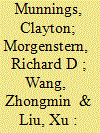

|
|
|
|
|
| Summary/Abstract |
To help overcome the challenge of growing CO2 emissions, China is experimenting with market-based instruments, including pilot CO2 emissions trading systems (ETSs) in seven regions that serve as precursors of a national CO2 ETS. Implementing an ETS in a rapidly growing economy in which government authorities exercise significant control over markets poses many challenges. This study assesses how well three of the most developed pilot ETSs, in Guangdong, Shanghai, and Shenzhen, have adapted carbon emissions trading to China's economic and political context. We base our study on new information gathered through interviews with local pilot ETS regulators and experts, analysis of recent trading data, and extensive legal and literature reviews. We point out instances in which pilot regulators have deftly tailored carbon emissions trading to China's unique context and instances in which designs are insufficient to ensure smooth operation. We also indicate areas in which broader institutional reforms of China's political economy may be required for carbon emissions trading to operate successfully. We make nine recommendations to improve the design and operation of the pilot programs and to inform the construction of a national CO2 ETS.
|
|
|
|
|
|
|
|
|
|
|
|
|
|
|
|
| 4 |
ID:
150443
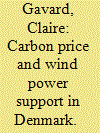

|
|
|
|
|
| Summary/Abstract |
This paper aims at characterizing the conditions of wind power deployment in order to infer a carbon price level that would provide wind power with comparable advantage over fossil fuel technologies as effective wind support policies. The analysis is conducted on Denmark after the electricity market liberalization. Probit and tobit techniques are employed to take account of a potential threshold effect. I find that the level and type of the support policy are the dominant drivers of deployment. A feed-in tariff significantly brings more wind power in than a premium policy. The additional capacity installed monthly increases by more than 1 MW for each additional €/MWh of support. This is compared to the effect of the electricity price, investment cost, interest rate and general economic activity. If the policy is a premium, I find that 23€/MWh of support in addition to electricity price is needed to observe the connection of new turbines to the grid with a 0.5 probability. I convert this support level into a carbon price of 27€/ton if wind power competes with coal, and 48€/t if it competes with gas.
|
|
|
|
|
|
|
|
|
|
|
|
|
|
|
|
| 5 |
ID:
105333
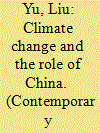

|
|
|
|
|
| Publication |
2011.
|
| Summary/Abstract |
Action to combat climate change is becoming ever more essential, especially as nations look toward their futures in an increasingly competitive world. Countries vie for obtaining the largest reduction in carbon emissions while the need for cooperation is also taking on ever-greater urgency. China has so far actively, solidly and diligently demonstrated its responsible image towards climate change, a point which should be understood and recognized by the developed world.
|
|
|
|
|
|
|
|
|
|
|
|
|
|
|
|
| 6 |
ID:
127528
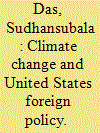

|
|
|
| 7 |
ID:
097471
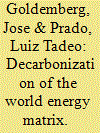

|
|
|
| 8 |
ID:
092769
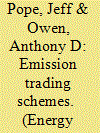

|
|
|
|
|
| Publication |
2009.
|
| Summary/Abstract |
The case for the imposition of carbon (emission) taxes or tradable carbon permits in important tax jurisdictions is arguably strong, based upon the polluter pays principle first proposed by Pigou almost a century ago. This paper briefly reviews the arguments for and against these market-based instruments, and discusses their relative advantages and disadvantages in a practical context. In the case of Australia, the revenue effect of the proposed tradable carbon permits scheme is estimated to be A$11.5 billion in 2010-11. For comparison, this is roughly equivalent to a quarter of the revenue from the Goods and Services Tax. The paper focuses on three neglected aspects of climate change taxation discussion to date: how much tax revenue is likely to be raised, and the administrative and compliance costs of an emissions trading scheme, with particular reference to Australia. In discussing these issues, the paper draws upon selected and relevant international experience, particularly the European Union emissions trading scheme. The challenges of an emissions trading scheme, including integration with the existing tax system, particularly in an Australian context, are also discussed. The paper concludes by emphasising the key challenges and issues facing this 'ultimate externality' debate, particularly from a taxation policy perspective.
|
|
|
|
|
|
|
|
|
|
|
|
|
|
|
|
| 9 |
ID:
116940
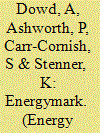

|
|
|
|
|
| Publication |
2012.
|
| Summary/Abstract |
Commitment to increase public awareness of climate change mitigation has risen substantially and so has the appreciation of the impact that comes from voluntary behaviour change. We aimed to test whether a process could be designed that encouraged individuals - from within their existing social networks - to facilitate energy reduction discussions that ultimately changed the way they consumed energy. Our "Energymark" process was grounded in the idea that change is facilitated by several supporting factors including the provision of tailored information, social support, encouragement to set goals, and access to feedback. In this paper we report on the first trial with members of the Australian public. By the end of the trial an average emissions reduction of 20% was reported using a pre- and post-trial carbon calculator incorporating the energy used at home, waste, spending on products and services, beef consumption, and transport. While many identified as climate change aware, and had the socio-economic capacity to make changes, we found that participants of widely varying demographics and dispositions responded to program features, achieving equivalent emissions reductions. This bodes well for the program's effectiveness and warrants further testing of the impact of voluntary action with social processes such as Energymark.
|
|
|
|
|
|
|
|
|
|
|
|
|
|
|
|
| 10 |
ID:
094273
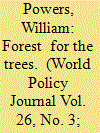

|
|
|
| 11 |
ID:
092733
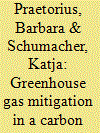

|
|
|
|
|
| Publication |
2009.
|
| Summary/Abstract |
Carbon capture and storage (CCS) promises to allow for low-emissions fossil-fuel-based power generation. The technology is under development; a number of technological, economic, environmental and safety issues remain to be solved. CCS may prolong the prevailing coal-to-electricity regime and countervail efforts in other mitigation categories. Given the need to continue using fossil-fuels for some time, however, it may also serve as a bridging technology towards a renewable energy future. In this paper, we analyze the structural characteristics of the CCS innovation system and perform an energy-environment-economic analysis of the potential contribution of CCS, using a general equilibrium model for Germany. We show that a given climate target can be achieved at lower marginal costs when the option of CCS is included into the mix of mitigation options. We conclude that, given an appropriate legal and policy framework, CCS, energy efficiency and some other mitigation efforts are complementary measures and should form part of a broad mix of measures required for a successful CO2 mitigation strategy.
|
|
|
|
|
|
|
|
|
|
|
|
|
|
|
|
| 12 |
ID:
103623
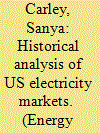

|
|
|
|
|
| Publication |
2011.
|
| Summary/Abstract |
This paper evaluates whether the U.S. electricity sector is directed away from carbon-intensive technological lock-in, and which factors are contributing, or have potential to contribute, to a possible reorientation of the industry. With the application of a historical analysis of the electricity sector from the late nineteenth century through current day, this analysis finds that, although the industry still relies primarily on carbon-intensive fossil fuel operations, several recent trends indicate that the industry is becoming less carbon intensive, smaller in generation system scale, and more sustainable in operations. Crucial drivers-firm level interactions with technological change, industry leadership and market structure, government intervention and policy momentum, and citizen involvement and behavior patterns-that have traditionally shaped the structure, scale, and environmental footprint of the industry, have also played a prominent role in recent transformations. These results indicate that triggering or extraordinary events may not be necessary to initiate an escape from carbon lock-in in the electricity sector. Complete escape is not yet definitive, however, and it remains to be seen whether the industry is able to transform entirely before any significant climate change disturbances occur.
|
|
|
|
|
|
|
|
|
|
|
|
|
|
|
|
| 13 |
ID:
094206


|
|
|
|
|
| Publication |
2010.
|
| Summary/Abstract |
Recent research has shown that once CO2 has been emitted to the atmosphere, it will take centuries for natural removal. Clearly, the longer we delay deep reductions in CO2, the greater the risk that total greenhouse gas emissions will exceed prudent limits for avoiding dangerous anthropogenic change. We evaluate the three possible technical approaches for climate change mitigation: emission reduction methods, post-emission draw down of CO2 from the atmosphere, and geoengineering. We find that the first two approaches are unlikely to deliver the timely reductions in CO2 needed, while geoengineering methods either deliver too little or are too risky. Given the deep uncertainties in both future climate prediction and energy availability, it seems safest to actively plan for a much lower energy future. We propose a general 'shrink and share' approach to reductions in both fossil-fuel use and carbon emissions, with basic human needs satisfaction replacing economic growth as the focus for economic activity. Only with deep cuts in energy and carbon can we avoid burdening future generations with the high energy costs of air capture.
|
|
|
|
|
|
|
|
|
|
|
|
|
|
|
|
| 14 |
ID:
132829
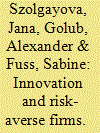

|
|
|
|
|
| Publication |
2014.
|
| Summary/Abstract |
In a regulated world where government seeks to decarbonize the energy sector, firms face both indirect and direct costs of emitting CO2. This study seeks to take the perspective of the firm, which needs to maximize profits implying minimization of (carbon) cost as well. In this study, the firm can compose the cost-optimal portfolio of (a) investing into carbon-saving technology, which is currently expensive, (b) investing into carbon-saving technology R&D and adopt this technology at a later point, (c) buying allowances per ton of emitted CO2 in a carbon market (alternatively this could be formulated as a tax), and (d) buying offsets traded in the same market, which are based on reduced emissions from deforestation and degradation (REDD+). Uncertainties in the cost of carbon coming from a lack of commitment in policy-making leading to fluctuations in markets and uncertainty in the payoff of R&D activities could provide disincentives to incur large up-front sunk cost and raise the economic value of being flexible. We apply a real options approach with stochastic carbon-saving technology costs and stochastic CO2 costs. Assuming that firms are risk-averse, they will not only value flexibility, but also risk reductions from diversification over the different (carbon mitigation) options.
|
|
|
|
|
|
|
|
|
|
|
|
|
|
|
|
| 15 |
ID:
187372
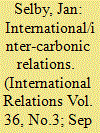

|
|
|
|
|
| Summary/Abstract |
If international relations can be theorised as ‘inter-textual’, then why not also – or indeed better – as ‘inter-carbonic’? For, not only is the modern history of carbon to a large degree international; in addition, many of the key historical junctures and defining features of modern international politics are grounded in carbon or, more precisely, in the various socio-ecological practices and processes through which carbon has been exploited and deposited, mobilised and represented, recycled and transformed. In what follows I seek to make this case, arguing that carbon and international relations have been mutually constitutive ever since the dawn of modernity in 1492, and that they will inevitably remain so well into the future, as the global economy’s dependence on fossil carbon continues unabated and the planet inexorably warms. Will climate change generate widespread conflict, or even civilisational collapse? How are contemporary power dynamics limiting responses to climate change? And how, conversely, might 21st-century world order be transformed by processes of decarbonisation? Building on research in political ecology, I argue that a dialectical sensitivity to ‘inter-carbonic relations’ is required to properly answer these questions. Scholars and students of International Relations (IR), I suggest, need to approach climate change by positioning the element C at the very centre of their analyses.
|
|
|
|
|
|
|
|
|
|
|
|
|
|
|
|
| 16 |
ID:
163315


|
|
|
|
|
| Summary/Abstract |
Most Americans used to think about climate change—to the extent that they thought about it at all—as an abstract threat in a distant future. But more and more are now seeing it for what it is: a costly, human-made disaster unfolding before their very eyes. A wave of increasingly destructive hurricanes, heat spells, and wildfires has ravaged communities across the United States, and both scientists and citizens are able to connect these extreme events to a warming earth. Seven in ten Americans agree that global warming is happening, according to a 2018 study conducted by the Yale Program on Climate Change Communication. About six in ten think it is mostly caused by human activity and is already changing the weather. Four in ten say they have personally experienced its impact. And seven in ten say the United States should enact measures to cut greenhouse gas emissions, including prices and limits on carbon dioxide pollution, no matter what other countries do.
|
|
|
|
|
|
|
|
|
|
|
|
|
|
|
|
| 17 |
ID:
092743
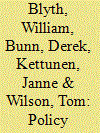

|
|
|
|
|
| Publication |
2009.
|
| Summary/Abstract |
Carbon pricing is an important mechanism for providing companies with incentives to invest in carbon abatement. Price formation in carbon markets involves a complex interplay between policy targets, dynamic technology costs, and market rules. Carbon pricing may under-deliver investment due to R&D externalities, requiring additional policies which themselves affect market prices. Also, abatement costs depend on the extent of technology deployment due to learning-by-doing. This paper introduces an analytical framework based on marginal abatement cost (MAC) curves with the aim of providing an intuitive understanding of the key dynamics and risk factors in carbon markets. The framework extends the usual static MAC representation of the market to incorporate policy interactions and some technology cost dynamics. The analysis indicates that supporting large-scale deployment of mature abatement technologies suppresses the marginal cost of abatement, sometimes to zero, whilst increasing total abatement costs. However, support for early stage R&D may reduce both total abatement cost and carbon price risk. An important aspect of the analysis is in elevating risk management considerations into energy policy formation, as the results of the stochastic modelling indicate wide distributions for the emergence of carbon prices and public costs around the policy expectations.
|
|
|
|
|
|
|
|
|
|
|
|
|
|
|
|
| 18 |
ID:
150350
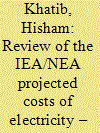

|
|
|
|
|
| Summary/Abstract |
The IEA/NEA recently issued their eighth edition of the Study on the “Projected Costs of Generating Electricity” – 2015 edition. The Study is mainly concerned with calculating the levelised cost of electricity (LCOE). The LCOE calculations are based on a levelised average life time cost approach using the discounted cash flow (DCF) method. The analysis was this year, and for the first time, performed using three discount rates (3%, 7%, and 10%). The LCOE can serve as a tool for calculating the cost of different generation technologies. However the Study's usefulness is affected by its narrow base of a limited set of countries that are not necessarily representative. It ignored the negative role of subsidies and did not provide a methodology for selective application of the discount rates and costing of carbon. The global power generation scene is changing. Generation growth in OECD countries has become very limited; simultaneously there is rapid growth of varying renewables (VRE) generation which needs special criteria for assessing its system cost. All this demands a rethinking of the application and usefulness of the LCOE in future generation planning.
|
|
|
|
|
|
|
|
|
|
|
|
|
|
|
|
| 19 |
ID:
118833
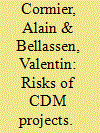

|
|
|
|
|
| Publication |
2013.
|
| Summary/Abstract |
The Clean Development Mechanism (CDM), launched in 2001, has attracted more than 7000 projects. Many, however, did not fully deliver the emissions reductions promised in their project design documents: out of 1.8 billion of expected Certified Emissions Reductions (CER) by April 1, 2011, only 576 million had been issued. This study classifies the risks incurred by CDM projects, attributes a share of the non-delivered CER to each risk, and identifies the most influential factors driving each risk. 29% of expected CER will never be issued due to failure of projects (negative validation, project withdrawn, …), 12% were not issued on time due to delays during the approval process (validation and registration), 27% were not issued on time due to delays at issuance, and only 1% will never be issued due to underperformance of projects in terms of CER delivered per day. Technology is identified as a key driver for all these risks: some technologies are less risky than others. Time is mainly influencing approval process and issuance delay. Other factors such as location, size of the project, auditor or consultant are occasionally important, but not for each risk.
|
|
|
|
|
|
|
|
|
|
|
|
|
|
|
|
| 20 |
ID:
094356
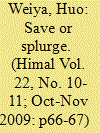

|
|
|
|
|
|
|
|